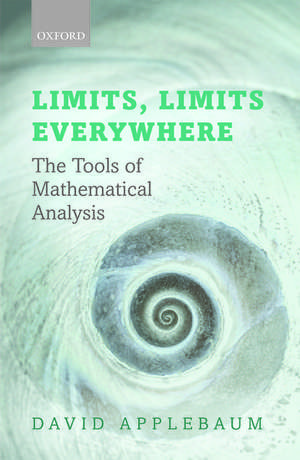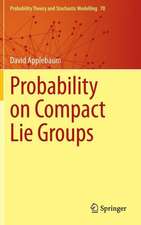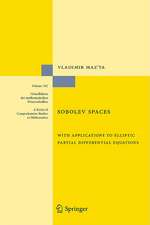Limits, Limits Everywhere: The Tools of Mathematical Analysis
Autor David Applebaumen Limba Engleză Paperback – mar 2012
Preț: 266.28 lei
Preț vechi: 311.27 lei
-14% Nou
Puncte Express: 399
Preț estimativ în valută:
47.12€ • 55.25$ • 41.38£
47.12€ • 55.25$ • 41.38£
Carte tipărită la comandă
Livrare economică 30 ianuarie-10 februarie 26
Preluare comenzi: 021 569.72.76
Specificații
ISBN-13: 9780199640089
ISBN-10: 0199640084
Pagini: 218
Ilustrații: 33 black and white line drawings
Dimensiuni: 153 x 234 x 12 mm
Greutate: 0.35 kg
Editura: Oxford University Press
Colecția OUP Oxford
Locul publicării:Oxford, United Kingdom
ISBN-10: 0199640084
Pagini: 218
Ilustrații: 33 black and white line drawings
Dimensiuni: 153 x 234 x 12 mm
Greutate: 0.35 kg
Editura: Oxford University Press
Colecția OUP Oxford
Locul publicării:Oxford, United Kingdom
Recenzii
This book does not offer an easy ride but its informal and enthusiastic literary style hold ones attention. Perhaps mindful of the content of much current popular mathematical exposition, the author draws many illustrations from number theory.
The author is able to mix both styles relating informal language to mathematical language and giving proofs that are deep but easy to read and follow.
Written in a style that is easy to read and follow, the author gives clear and succinct explanations and meets his desire for this to be between a textbook and a popular book on mathematics.
Recommended in the Times Higher Education's Textbook Guide 2012.
This is an excellent book which should appeal to teachers and pre-University or undergraduate students looking for a hands-on introduction to mathematical analysis.
The book is devoted to the discussion of one of the most difficult concepts of mathematical analysis, the concept of limits. The presentation is instructive and informal. It allows the author to go much deeper than is usually possible in a standard course of calculus. Moreover, each portion of the material is supplied by an explanation why and what for it is necessary to study (and to teach) the corresponding part of calculus ... the book can be recommended for interested students as well as for teachers in mathematics.
The author is able to mix both styles relating informal language to mathematical language and giving proofs that are deep but easy to read and follow.
Written in a style that is easy to read and follow, the author gives clear and succinct explanations and meets his desire for this to be between a textbook and a popular book on mathematics.
Recommended in the Times Higher Education's Textbook Guide 2012.
This is an excellent book which should appeal to teachers and pre-University or undergraduate students looking for a hands-on introduction to mathematical analysis.
The book is devoted to the discussion of one of the most difficult concepts of mathematical analysis, the concept of limits. The presentation is instructive and informal. It allows the author to go much deeper than is usually possible in a standard course of calculus. Moreover, each portion of the material is supplied by an explanation why and what for it is necessary to study (and to teach) the corresponding part of calculus ... the book can be recommended for interested students as well as for teachers in mathematics.
Notă biografică
David Applebaum obtained his PhD at the University of Nottingham in 1984. After postdoctoral appointments in Rome and Nottingham, he became a lecturer in mathematics at Nottingham Trent University (then Trent Polytechnic) in 1987 and was promoted to reader in 1994 and to a chair in 1998. He was Head of Department 1998-2001. He left Nottingham Trent for a chair in Sheffield in 2004 and served as Head of Department of Probability and Statistics there from 2007-10.













